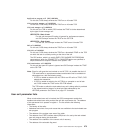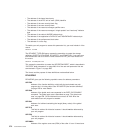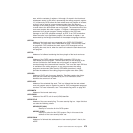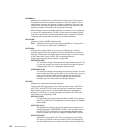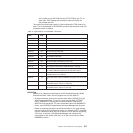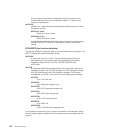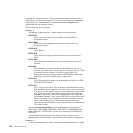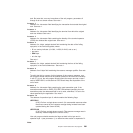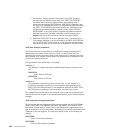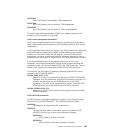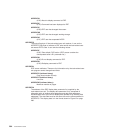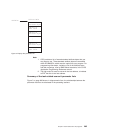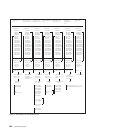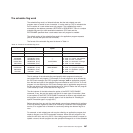task. But note that, on many invocations of the exit program, parameters 2
through 9 do not contain values. See note 1.
Parameter 3
Address of a 4-character field identifying the transaction that started the original
task. See note 1.
Parameter 4
Address of a 4-character field identifying the terminal from which the original
task was initiated. See note 1.
Parameter 5
Address of a 4-character field containing the identity of the terminal operator
(OPID) who initiated the original task. See note 1.
Parameter 6
Address of a 4-byte, packed-decimal field containing the date of the failing
syncpoint, in the format 0Cyyddds, where:
v C is a century indicator. (0=1900, 1=2000, 2=2100, and so on.)
v yy=years.
v ddd=days.
v s is the sign.
See note 1.
Parameter 7
Address of a 4-byte, packed-decimal field containing the time of the failing
syncpoint, in the format 0hhmmss+. See note 1.
Parameter 8
Address of an 8-byte field containing the resource manager qualifier. See note
1.
To verify that this is a resync for this instance of the resource manager, your
exit program should check that the qualifier passed is the one that is currently
in use. If it is not, the exit program should ignore the resync and set a return
code of UERFHOLD, to indicate that CICS should keep the disposition of the
unit of work.
Parameter 9
Address of a 4-character field containing the next transaction code. If the
transaction ended with an EXEC CICS RETURN without specifying the next
transaction code, the addressed field is set to nulls; otherwise, it is set to the
value specified by the application. See note 2.
Parameter 10
The address of operation byte 2, which contains the following flags:
UERTONLY
(X'80') Perform a single-phase commit. (No recoverable resources other
than those owned by the resource manager being invoked have been
updated during the current UOW.)
UERTELUW
(X'40') Perform a single-phase commit. (The resource manager was in
read-only mode throughout the current UOW.)
Your exit program should examine the flags set both in this byte and in
operation byte 1 (see parameter 1), to determine what action is expected of it.
Note:
Chapter 2. Task-related user exit programs 281



